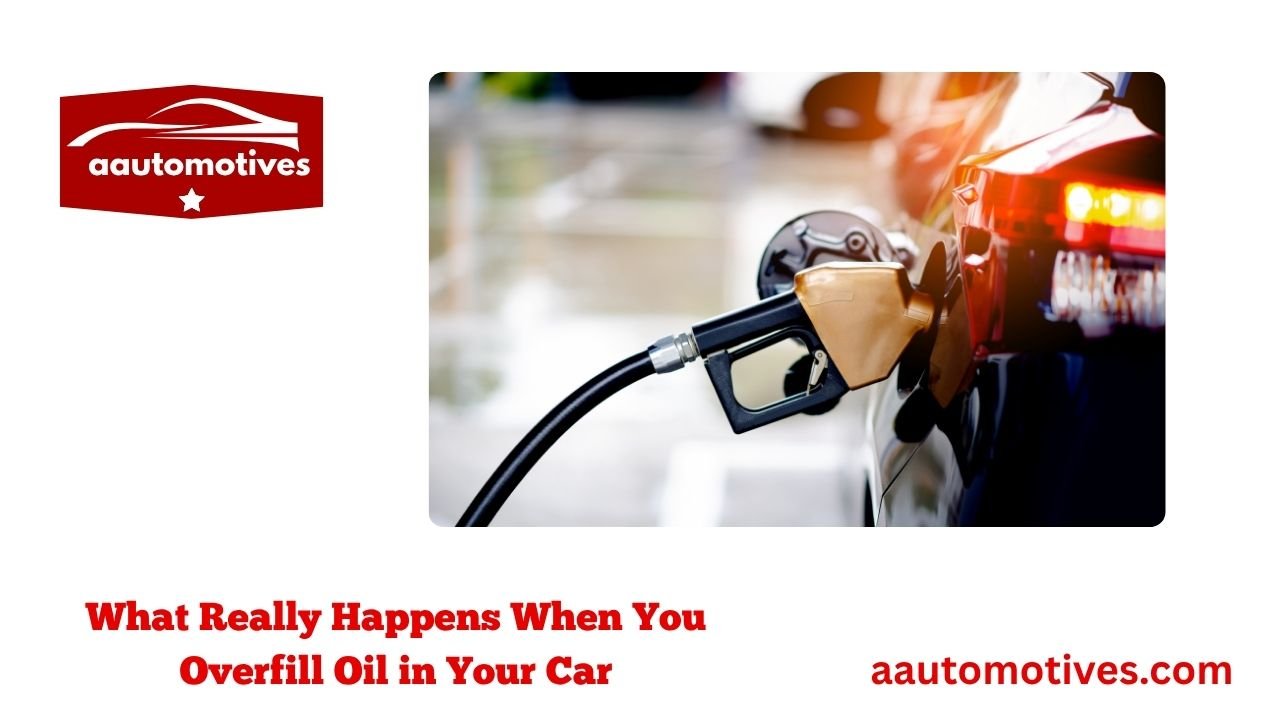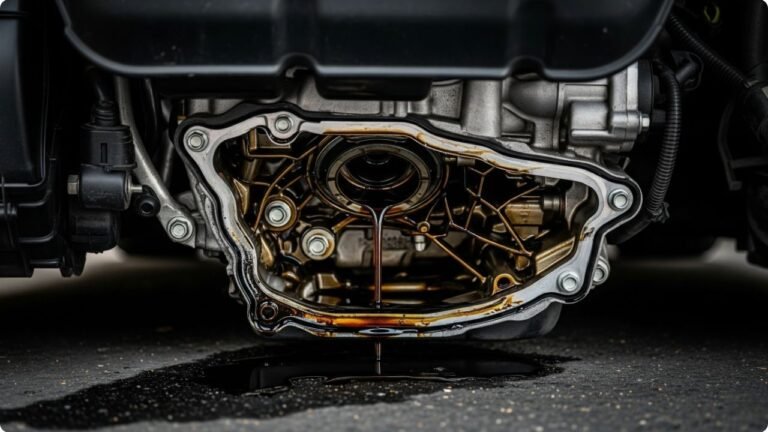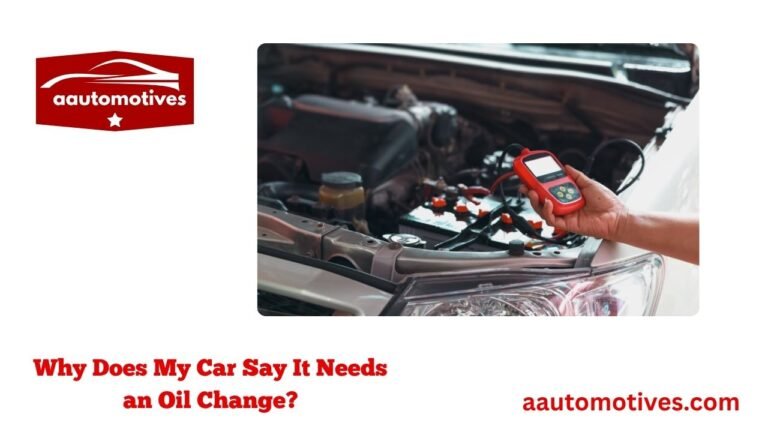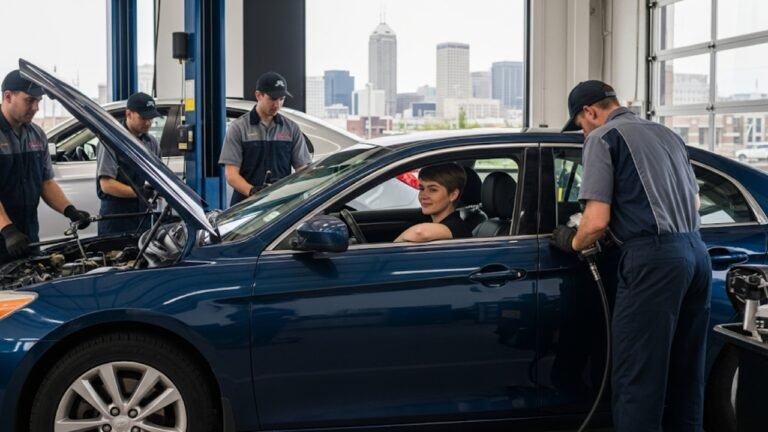What Really Happens When You Overfill Oil in Your Car

Let’s be honest—most of us have been there. You’re topping off your engine oil, and just to be safe, you pour in a bit more. You think, “What’s the harm?” A little extra should be better, right? But here’s the kicker—overfilling engine oil can do more harm than good, and the effects are far worse than most people think.
Understanding the consequences of overfilling oil in car isn’t just a mechanic’s lecture. It’s something every driver should care about—whether you’re a road trip junkie, a daily commuter, or a weekend warrior with your garage tools. In this article, I’ll walk you through exactly what happens when that dipstick goes past the max line—and why that small mistake can cost you big.
In This Article
- 1 Why “Too Much” Engine Oil Isn’t Just a Little Problem
- 2 Let’s break it down with a quick overview:
- 3 The Role of Oil in an Engine: Why Balance Matters
- 4 How Overfilling Damages the Catalytic Converter
- 5 Increased Pressure Can Lead to Engine Leaks
- 6 The Long-Term Consequences for Engine Health
- 7 Warning Signs That You’ve Overfilled the Oil
- 8 How to Fix an Oil Overfill: Simple but Messy Solutions
- 9 Preventing Overfill: Tips for a Safe Oil Top-Up
- 10 The Environmental Impact of Oil Overfill
- 11 Emotional Costs: The Stress No One Talks About
- 12 FAQs: Quick Answers to Common Questions
- 12.1 1. Can too much oil damage my engine permanently?
- 12.2 2. How much oil is too much?
- 12.3 3. Can I drive my car if I accidentally overfilled it?
- 12.4 4. Will an oil change fix the problem?
- 12.5 5. How do I know if my catalytic converter is affected?
- 12.6 6. Does overfilling oil void the warranty?
- 12.7 7. Is it better to slightly underfill than overfill?
- 12.8 8. Can an oil overfill cause misfires?
- 13 Conclusion: A Little Caution Goes a Long Way
Why “Too Much” Engine Oil Isn’t Just a Little Problem

When you overfill your oil, several things can go wrong. First, that extra oil creates too much pressure inside the crankcase. Picture shaking a soda can before opening—it builds pressure that pushes back. This can cause seals and gaskets to blow out or leak. Once that happens, you’re leaking oil, burning it, and damaging other parts too.
The worst part? The crankshaft starts whipping the excess oil like a blender. This process, called “aeration,” mixes oil with air. And aerated oil doesn’t lubricate well—it’s foamy and thin. That can cause engine wear, overheating, or even failure.
Let’s break it down with a quick overview:
| Problem | Result |
|---|---|
| Oil aeration | Poor lubrication, overheating |
| Blown gaskets | Oil leaks, repair costs |
| Worn seals | Engine bay contamination |
| Catalytic converter damage | Emissions issues, costly replacements |
| Reduced fuel economy | Engine strain and inefficiency |
| Sensor malfunction | Faulty readings, dashboard errors |
This isn’t just theory. I’ve seen it firsthand. A friend of mine—let’s call him Mike—once added half a quart too much to his Civic. Within a week, his driveway was stained, his check engine light came on, and the dealership handed him a $1,200 estimate for a new PCV valve, gaskets, and labor. All for what? A “just-in-case” top-up.
The Role of Oil in an Engine: Why Balance Matters
To understand the consequences of overfilling oil in car, you first need to get what oil actually does. Think of engine oil as the blood of your vehicle. It cools, lubricates, and cleans the engine’s internals. But like with blood pressure, too much or too little is dangerous.
Your engine relies on oil pressure created by the right volume of fluid in a closed loop. This loop includes pumps, galleries, filters, and passages. When the oil is too high, it disrupts this balance. Oil flows differently, splashes excessively, and can even reach parts it shouldn’t—like the spark plugs or the catalytic converter.
You might hear a strange ticking noise or sluggish acceleration. That’s your car telling you, “Hey, something’s wrong in here!” Don’t ignore it.
And while draining the excess oil might seem simple, it’s not always clean or easy. You might need to lift the car, use a vacuum pump, or deal with messy spills. The best approach? Avoid overfilling in the first place.
How Overfilling Damages the Catalytic Converter
Now here’s a consequence that surprises a lot of people. When your car has too much oil, some of it can slip past piston rings and burn inside the combustion chamber. This burnt oil creates smoke and soot. Eventually, it clogs up your catalytic converter, which is a key part of your emissions system.
Think of the catalytic converter like your car’s lungs. It filters out toxins before releasing exhaust into the air. But when oil burns inside the engine, it chokes the converter with residue. This reduces performance, triggers warning lights, and causes your car to fail emission tests.
And let me tell you—replacing a catalytic converter isn’t cheap. We’re talking $800 to $2,000 or more depending on your car. So, that “extra quart” of oil? It could cost you a long weekend’s pay and your car’s eco-friendly badge.
Increased Pressure Can Lead to Engine Leaks
Imagine filling a balloon with water. Keep going, and eventually, it’ll burst or leak at the seams. That’s exactly what happens inside your engine when there’s too much oil. The increased volume causes internal pressure to rise, pushing oil past seals that were never designed for that load.
It’s not just messy—it’s dangerous. Oil might leak onto hot engine components, creating smoke or even a fire risk. You might see blue smoke from the exhaust or oil spots under your car. Either way, you’re now dealing with repairs and a possibly hazardous situation.
This is one of the hidden consequences of overfilling oil in car. It’s not immediate—but give it a few drives and those tiny leaks become real problems.
The Long-Term Consequences for Engine Health
Maybe you won’t notice anything right away. Maybe your car drives fine after the overfill. But just like eating too much salt won’t kill you in a day, engine oil overfill causes slow, steady wear that shortens your engine’s lifespan.
Foamy oil can’t lubricate bearings or camshafts properly. That causes micro-friction and excess heat. Over time, your engine will lose efficiency. Parts will wear unevenly. You’ll start burning more gas, and your check engine light may become a regular guest.
And once engine wear begins, there’s no magic fix. You can’t “undo” it. The best you can do is prevent it in the first place.
Warning Signs That You’ve Overfilled the Oil
Most drivers don’t realize they’ve overfilled their oil until something goes wrong. But your car does try to warn you. You just have to know what to look (and listen) for. Some symptoms show up subtly, while others are loud and alarming. Either way, pay attention.
Common signs of an oil overfill include:
-
Blue smoke from the exhaust
-
Burning oil smell inside the cabin
-
Poor acceleration or rough engine idle
-
Oil leaks under the vehicle
-
Check Engine or Oil Pressure light turning on
One time, I helped a neighbor with his SUV. He’d just done a DIY oil change and accidentally overfilled by nearly a quart. A few days later, his engine started misfiring, and thick smoke was billowing out. We checked the dipstick—yep, way past the full mark. A quick drain helped, but he still ended up with fouled spark plugs. These kinds of mistakes can snowball fast.
How to Fix an Oil Overfill: Simple but Messy Solutions
Okay, let’s say the damage isn’t done yet. You’ve just realized you overfilled the oil. What now?
The good news is, if caught early, the fix is usually pretty simple. Here are a few options:
-
Use a fluid extractor – This handy tool lets you remove oil through the dipstick tube without crawling under the car.
-
Loosen the drain plug slightly – Let a small amount drain out. Just be careful—you can easily remove too much.
-
Visit a mechanic – If you’re unsure, it’s worth paying a pro to do it right and inspect for leaks or damage.
Keep in mind, you need to check oil levels cold and on level ground. Hot oil expands and can give you a false reading. Also, make sure you wait a few minutes after turning off the engine before checking—it allows the oil to settle.
Preventing Overfill: Tips for a Safe Oil Top-Up
Prevention is always better than the cure, especially with car maintenance. Overfilling oil might seem harmless, but as we’ve seen, it brings a whole host of problems. So let’s talk about how to avoid overfilling oil in your car in the first place.
-
Always consult your owner’s manual. It tells you the exact oil capacity, including filter volume.
-
Use a funnel when adding oil. This gives you better control and prevents spills.
-
Add a little at a time. If the oil is low, top off in small amounts—about 100 ml or ¼ quart—and check the dipstick after each pour.
-
Don’t rely on guesswork. Measuring helps. Use a clear measuring container or read the oil bottle markings.
-
Get familiar with the dipstick. The marks matter—low, full, and overfill zones are clearly marked for a reason.
Once, I taught my teenage cousin how to do her first oil top-up. She got impatient and dumped in nearly a whole quart instead of checking as she went. We had to siphon the extra oil back out. Lesson learned the hard way.
The Environmental Impact of Oil Overfill
There’s another side to the consequences of overfilling oil in car that we often overlook—the environmental cost. Excess oil that leaks or burns off doesn’t just stay in your engine. It ends up on roads, in water systems, or as harmful emissions in the air.
Burning oil releases hydrocarbons and particulates. These pollutants contribute to smog and can even affect lung health. And when oil leaks onto the road or driveway, rain can wash it into storm drains, harming aquatic life.
If your vehicle burns oil regularly because of overfill damage, it’s not just your problem anymore—it becomes everyone’s. Taking care of your engine is part of being a responsible driver, both financially and environmentally.
Emotional Costs: The Stress No One Talks About
Let’s be real—car troubles are more than just mechanical. They’re stressful. When something goes wrong, it messes with your peace of mind. That “thunk” under the hood or that warning light on your dash can ruin your day or even your week.
I remember the first time I had engine issues due to oil problems. I was out of town, miles from home, and my engine started knocking. I had overfilled the oil before the trip, thinking I was being cautious. The stress of limping to a mechanic, wondering how bad the damage was, wasn’t something I ever wanted to repeat.
When you understand the consequences of overfilling oil in car, you see it’s not just about your engine—it’s about your time, your wallet, your plans, and your peace of mind.
FAQs: Quick Answers to Common Questions
1. Can too much oil damage my engine permanently?
Yes, if left uncorrected, overfilled oil can cause long-term damage to internal parts, especially from foaming, poor lubrication, or gasket failures.
2. How much oil is too much?
Even as little as ½ quart above the max line can be harmful. Always stick to the manufacturer’s recommended capacity.
3. Can I drive my car if I accidentally overfilled it?
Not recommended. Driving even a few miles with overfilled oil can lead to leaks, smoke, and performance issues. Drain the excess immediately.
4. Will an oil change fix the problem?
Yes, doing a complete oil change with the correct amount will fix overfilling—unless damage has already occurred.
5. How do I know if my catalytic converter is affected?
If you notice reduced performance, a rotten egg smell, or check engine light, you may need to have the catalytic converter checked.
6. Does overfilling oil void the warranty?
In some cases, yes. Manufacturers may refuse warranty repairs if negligence, like overfilling, caused the issue.
7. Is it better to slightly underfill than overfill?
Slightly underfilling by a small margin is generally safer than overfilling. But always aim to keep it at the correct level.
8. Can an oil overfill cause misfires?
Absolutely. If oil enters the combustion chamber, it can foul spark plugs and cause misfires or rough idling.
Conclusion: A Little Caution Goes a Long Way
It’s easy to think more oil means more protection. But in reality, the consequences of overfilling oil in car are serious and costly. From engine wear to emissions damage, the risks far outweigh the benefits of that “extra bit.” The best practice? Measure carefully, check often, and stay informed.
Your car isn’t just a machine—it’s a partner in your daily life. Treat it with care, and it’ll give you years of reliable service. Skip the guesswork. Because in this case, more really is too much.






